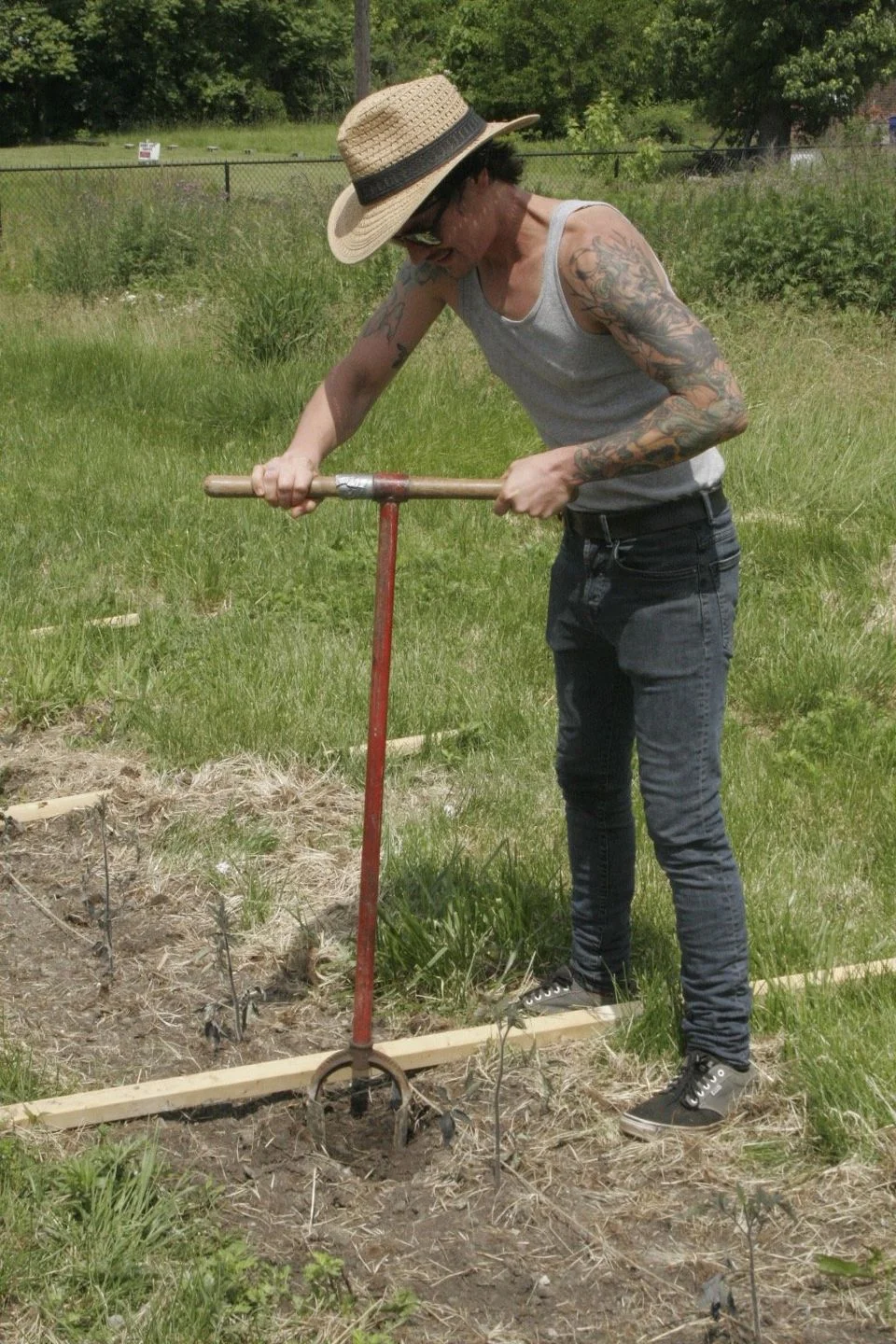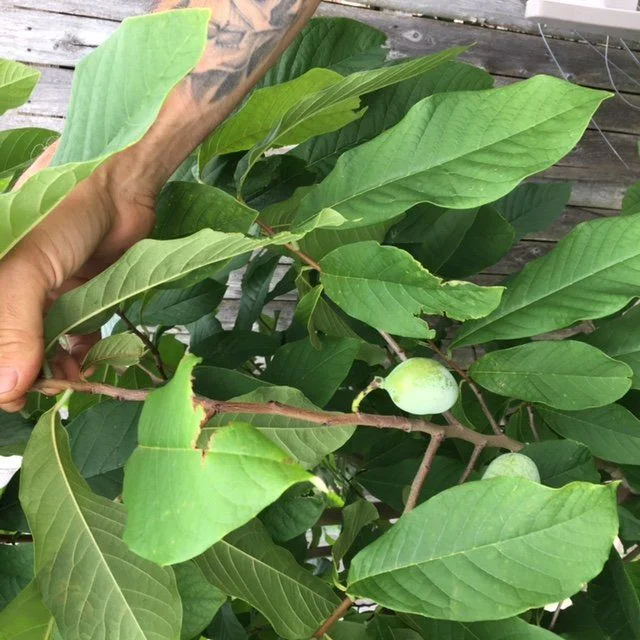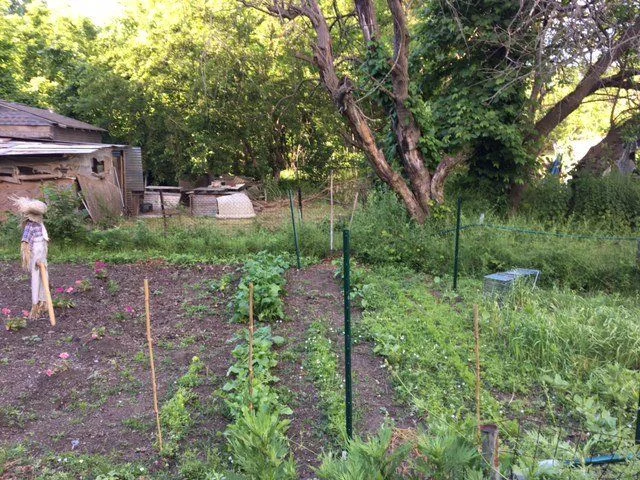How Urban Agriculture Swept Through Greater Cleveland
How Urban Agriculture Swept Through Greater Cleveland
Posted on July 17, 2017 at 7:00 AM | By Patrick Cooley, cleveland.com | pcooley@cleveland.com
CLEVELAND, Ohio -- Kinsman Farm, marked by crop-filled fields and surrounded by tall trees and grass filled lots, would seem at home in a rural Ohio county.
But the pasture of leafy greens sits in the heart of Cleveland, Ohio's second most populous city.
And Kinsman Farm isn't the only field of fruits and vegetables within Cleveland's city limits. It's part of a trend that picked up steam in recent years: urban farming. That practice began 25 to 30 years ago, said Kareem Usher, an assistant professor of city and regional planning at the Ohio State University. But a push by restaurateurs for local ingredients and the desire of city officials to fill empty and unused lots helped fuel the rise of urban agriculture in recent years.
The city leases land to Kinsman Farm, which in turn leases quarter acre plots to local farmers looking to advance from gardening or backyard farming to full-scale urban farming.
"I've been farming on a plot in North Royalton for the past two and a half years and I just moved (to Kinsman Farm) this season," said farmer Halle Kirsch. She plans to grow lettuce, microgreens and kale and manages a beehive that produces honey.
Kirsch said her time in North Royalton was her first foray into urban agriculture. Fellow farmer David Horvath, who also has a plot at Kinsman Farm, said he had an urban garden before he decided to grow crops for sale.
"I'm using Kinsman as an opportunity to scale up and learn as I go," Horvath said.
He grows tomatoes, peppers, herbs and mouse melons (a small cucumber) on his plot in Kinsman.
Both Kirsch and Horvath said they hope to sell their crops to Cleveland area restaurants.
"This past fall I went to a variety of restaurants (from small-scale family owned restaurants to trendy, upscale restaurants) and gave them samples and they were receptive," Kirsch said. "They were so happy to have local, fresh produce. The demand is way bigger than the push that's happening right now."
Urban farms are taking up root in formerly vacant lots all over the East Side, encouraged by local laws intended to convert unused land into green space.
Most are much smaller than Kinsman Farm and Rid-All, containing a single hoop house or a small field (Bay Branch Farm, a Lakewood farm run by a Cleveland couple, is a half acre).
Erich Hooper is one Northeast Ohio's first urban farmers. He grows fruits and vegetables in his backyard and sells food (mostly vegan and vegetarian) at festivals. He took up the pastime in 1994 and now proudly refers to his farm -- which he calls Hooper Farm -- as the oldest urban farm in the city of Cleveland.
Hooper grows Swiss chard in a small greenhouse. Further down the gentle slope of the hill that his house sits on, he keeps a pasture surrounded by a four-foot-high fence that's filled with asparagus, squash, beets and other assorted fruits and vegetables.
An elaborate system of barrels captures rainwater.
"We collect about 1,000 gallons of water a summer," Hooper said. "It saves us on water costs."
A strategically placed set of traps capture animals like groundhogs that burrow under the garden and endanger his crops.
Hooper sells much of his crops to local restaurants, a common theme among urban farmers. Shortly before speaking with a cleveland.com reporter on a recent Wednesday, he had just sold Fahrenheit -- an Ohio City restaurant -- a shipment of ghost peppers.
What follows is a look at urban farms, and how and why they have proliferated.
You can read about specific urban farms in Greater Cleveland here.
How many urban farms are there in Greater Cleveland?
It is difficult to come up with an exact number because there's no commonly accepted definition of an urban farm that separates it from an urban garden. But by some estimates, Cleveland is the second largest urban farming city in the United States.
Justin Husher, a horticulture specialist for the Cuyahoga County Soil and Water Conservation District, said the county has between 30 and 40 urban farmers.
Do they benefit the community?
By putting empty lots to use and creating jobs in impoverished neighborhoods, urban farms appear to provide many benefits to the communities they inhabit.
"It's putting that land to some use, particularly in cities that are shrinking," said Usher, the assistant professor at the Ohio State. "And I think it can build community pride and social capital."
Cleveland has more than 14,000 parcels of vacant land, and although it will likely experience population growth, said Michael Cosgrove, director of community development for the city of Cleveland, the city probably won't grow enough to fill all of its empty space.
Although they are still few and far between, urban farms could help make up some of the difference.
But experts said more research is necessary to determine whether or not urban agriculture helps a community in other ways.
While urban farmers tout the advantages of their trade, the practice hasn't been scrutinized enough to conclusively say how it impacts a neighborhood, said Zoe Plakias, an assistant professor of agriculture at the Ohio State University.
"Urban ag is very exciting and promising, and we've seen a lot of positive impacts," she said. But "there's definitely a need for more research to better understand" those impacts.
For example: an urban farm can absorb carbon and reduce the greenhouse gases that contribute to climate change. However it's unclear if urban farms absorbs carbon better than urban forests.
And as urban farms become more prevalent, they may begin to clash with traditional farms, Usher said.
"What happens to food producers who exist outside of the city?" he asked. "When we help local growers, are we going to be competing with family-owned farms? There's a long of entanglement. It can work well, but we don't have a sustainable model as of yet."
A 2016 report from the Johns Hopkins Center for a Livable Future found that urban farming and urban gardens can raise property values, but said that higher property rates can push poor people out of their neighborhoods. Farms create jobs in impoverished areas, the report said, but few of the jobs pay a living wage.
Indeed, Cleveland Area urban farmers interviewed for this story said they pay workers between minimum wage and $10 an hour. Their goal, they said, isn't solving joblessness, but giving young people valuable experience.
"This year I'm expecting 20 kids," Ka La Healing Garden Founder and CEO Tanya Holmes said. "I teach them how to do landscaping and urban farming."
In 2015 "I had 32 kids and only two of them knew how to cut grass," Holmes said.
But she said the most important lesson she teaches is community stewardship.
"We generally have three to four people here," said Mansfield Frazier, executive director of Neighborhood Solutions, which manages Chateau Hough in the rugged and Hough neighborhood on Cleveland's East Side.
His farm -- which grows grapes used to make wine -- was built by workers from Oriana House, which provides rehabilitation for alcoholics and drug addicts. But Frazier said he mostly hires teenagers now.
How do they get started?
Cleveland's city government, along with state and federal agencies, offer financial help to aspiring urban farmers. Available assistance includes grants from the U.S. Department of Agriculture, the Ohio State University Extension Office and the National Resources Conservation Service.
The NRCS, for example, invested in more than 80 hoop houses throughout Cuyahoga County in 2011 and 2012, said Husher, the horticulture specialist.
Holmes, of the Ka La Healing Garden, secured loans from Farm Credit of Mid America -- with help from Cleveland Congresswoman Marcia Fudge -- to repair the garden's gate and feed her workers.
Legal changes made the city more amenable to urban agriculture in the 2000s, when zoning laws changed to accommodate hoop houses and other buildings urban farmers rely on.
Cleveland has programs for both urban farmers looking to sell their crops for profit and community gardeners who grow mostly for themselves.
"Community gardens are, at most, a few parcels large," said Cosgrove, the Cleveland community development director. "They're usually in the sort of area that is accessible to the community. They're small scale, more built around the neighborhood.
The city leases land to farmers -- and occasionally sells them plots at a hefty discount. Cleveland also partners with Cuyahoga County's Ohio State University Extension office to fund community gardens through a Summer Sprout program, which provides grants that extension officials use to train gardeners and provide them with seeds, starter plants and services like soil tilling.
Eric and Annabelle Stoffer of Bay Branch Farm in Lakewood said they took a master gardener training program through the OSU extension.
In 2008, Cleveland amended its Neighborhood Retail Assistance Program to create the Gardening for Greenbacks program, which provides $3,000 grants to farmers who pledge to stay in urban agriculture for at least two years and sell their crops for profit.
"Some of them sell at local farm stands in neighborhoods that could be a food desert," said Kevin Kevin Schmotzer, executive for small business development for the Cleveland Department of Economic Development.
Others sell to local restaurants, he said.
In 2012, Cleveland got the attention of CoBank, which is part of the U.S. Farm Credit system, which helped Cleveland increase the value of its grants to $5,000. The city awarded $40,000 to eight community farms in 2015 and 2016.
Technical help is also available. Husher's duties include connecting farmers with the services they require.
"Sometimes people are really good growers but they need an insurance agent," he said. "Other times it's people trying to build a hoop house and they have really bad soil and they need to bring it up to speed."
What are the challenges?
Starting an urban farm requires an upfront investment that can reach tens of thousands of dollars. Eric Stoffer of Bay Branch Farm said he and his wife spent thousands on equipment alone
And while most urban farms are self-sustaining, many don't provide their operators with a living wage. Most urban farmers have a job off the farm. Eric Stoffer tends to his farm full time, but his wife still works part-time.
And farmers taking up root in a city have to deal with limited space and soil that is not always conducive to agriculture.
"One of the webpages I'm developing is literally just pictures of rocks to show what farmers have to contend with in terms of soil quality," said Husher, the horticulture specialist. Much of Cleveland's vacant land was once industrial, making its tainted soil of little interest to farmers, Cosgrove said.
Once they've established their farm, he said, some struggle to find places to sell their crops.
Farmers who work on the Kinsman Farm said they've spoken to local restaurateurs who are eager to use locally grown fruits and vegetables in their kitchens. But Husher said Cleveland's lack of a central farmer's market can hinder an urban farmer's ability to sell their crops to everyday customers.
Cities like Portland, Oregon and Ithaca, New York have large, central farmer's markets, whereas Cleveland and its suburbs have many small ones, which Husher said dilutes the customer base.
"Farmer's market sales are down across the board," he said. "There are just too many."
Even as restaurants increasingly seek out local fruits and vegetables, smaller farmers say they must with large-scale farms that can provide larger volumes of food. Eric Stoffer said only a small portion of his crops are sold to restaurants.
"There are restaurants that want to do local, but I've worked in the food-service business, and I understand you have a menu" and you can't take items off of it because suppliers aren't able to provide certain ingredients that week, he said.
What are they growing?
Most urban farmers grow specialty crops like tomatoes, kale, chard, beets and peppers.
Limited space means that most urban farmers can rule out the volume crops -- such as corn and soybeans -- that rural farmers depend on.
The Hough Chateau grows grapes for wine and the Rid-All Green Partnership has, among other things, peach trees and raspberry bushes.
Tanya Holmes of the Ka La Healing Garden sold vegetables at farmer's markets before upgrading to a full scale urban farm complete with a greenhouse on Cleveland's East Side in 2010.
Her garden grows tomatoes, collard greens, squash, peppers, zucchini, cantaloupe, cucumbers, and Swiss chard.
Eric Stoffer of the Bay Branch farm in Lakewood said he grows leafy greens and root vegetables, which he sells at farmers markets and to local restaurants, most notably the Root Cafe on Lakewood's Detroit Avenue.
"That's our main customer," Stoffer said. "But we're still looking for other relationships."
What does the future hold?
Husher said urban agriculture is entering it's "2.0" phase. Farms are starting to mature and flourish, rather than simply subsist, and he said he hopes to see new and exciting crops grown here in Cleveland in the coming years.
Usher, the Ohio State University professor, said he's visited urban farms in cities as far away as Portland, and believes the industry is here to stay.
"People do this because they believe in something," he said. "They believe in doing the work."
















